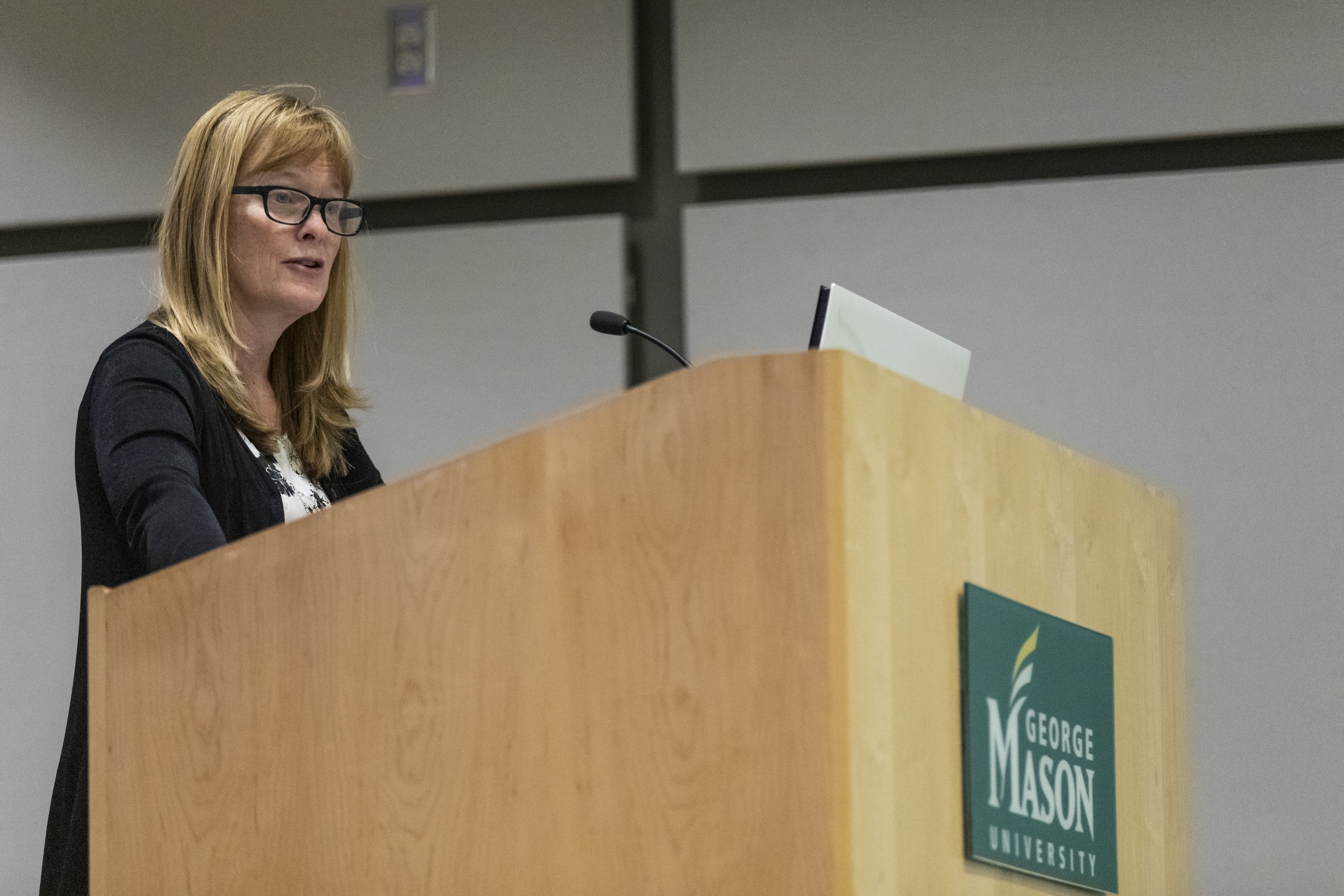
Deb Crawford, Mason's vice president of research, speaks to the gathered teams from the National Science Foundation’s Critical Resilient Interdependent Infrastructure Systems and Processes at Mason's Arlington Campus. "There’s no doubt in any of our minds about the complex, interconnected and independent infrastructure systems on which we all depend for our everyday lives,” she said. “Our lives and those of our families literally depend on the resiliency of those systems.” Photo by Lathan Goumas.
A shared concern over the fate of America’s aging infrastructure and its resilience in the wake of an unexpected disaster brought a vast group of researchers from across the United States to George Mason University last week.
Grantees from nearly all of the National Science Foundation’s Critical Resilient Interdependent Infrastructure Systems and Processes (CRISP) project teams gathered on Mason’s Arlington Campus at Founders Hall on Dec. 5 and 6 to share their various project results, generate new ideas and discuss how to sustain their community in the wake of the program’s pending conclusion after five years.
The group of researchers in attendance accounted for nearly $100 million in NSF-sponsored projects.
“This event involved nearly all teams who have been funded by CRISP over its five years of existence,” said Mason’s Elise Miller-Hooks, Bill and Eleanor Hazel Chair in Infrastructure Engineering and a professor within the Volgenau School of Engineering. “This workshop was a way to bring us all together to create a community going forward on the topic of resilience and critical infrastructure.”
The workshop featured college faculty members from all over the United States and Puerto Rico, as well as a number of postdoctoral students and federal officials from the NSF and the Environmental Protection Agency.
The multidisciplinary effort to study critical resilient interdependent infrastructure systems comes at an important time for America’s aging infrastructure. These systems, which are designed to provide goods and services critical to the nation’s economic and social well-being, face growing risks of disruption from natural and human-made disasters, including cyber threats.
Deborah Crawford, Mason’s vice president of research, said she was delighted to see such a strong turnout for such an important topic.
“There’s no doubt, I think, in any of our minds about the complex, interconnected and independent infrastructure systems on which we all depend for our everyday lives,” she said. “Our lives and those of our families literally depend on the resiliency of those systems.”
A former NSF program director prior to coming to Mason, Miller-Hooks lauded the CRISP program for bringing together computer scientists, engineers, economists and social scientists, among other researchers, for the common purpose of strengthening the resiliency of America’s infrastructure systems.
“It created whole new areas of research,” she said of the program. “It really seeded an area.”
NSF program officer Bruce Hamilton said that future funding for that research could come from other programs with concepts stemming from CRISP.
